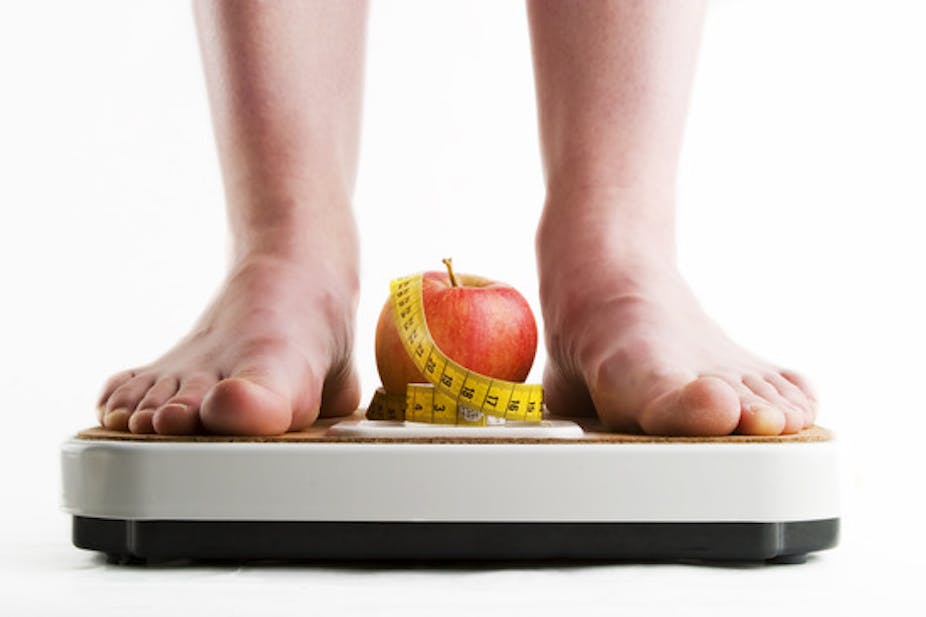The French government is backing parliamentary plans to ban unhealthily thin models from catwalks. Under two proposed amendments to recent health reforms, anyone employing skinny, undernourished fashion models or “glorifying anorexia” could face fines of up to €75,000 (US$80,000; £54,000; A$104,000) and a six-month prison sentence.
These measures, if passed into law, would oblige models to provide medical certificates showing that their body mass index (BMI, which is a type of height-to-weight ratio) exceeds a required minimum. The acceptable minimum BMI has yet to be decided, but the World Health Organization considers people with a BMI below 18.5 to be underweight and at risk of being malnourished.
Setting the limit at this level could mean significant changes to the fashion and advertising landscape. Research suggests that the average fashion model has a BMI below this threshold. In a 1997 study published in The Lancet, for instance, researchers used biometric data (such as height, bust, waist and hip measurements) provided on model agency websites to estimate the mean BMI in a sample of 300 fashion models.
They found fashion models tended to be significantly underweight, with an average BMI of 17.6. To put this in perspective, the average BMI for French women is around 23.2, for British women is 27, and for American women is 28.7. Data from 2007-08 shows the average Australian woman’s BMI was 26.7. The healthy range for BMI is between 18.5 and 25.
Damaging effects
Socialist politician and neurologist Olivier Veran, who put the measures forward, said:
The social impact of the image conveyed by fashion, where women must be thin to a pathological degree to be beautiful and go on the catwalk, is very severe.
Although his claim may somewhat overstate the case, there is support from a wealth of research that exposure to ultra-thin images can have adverse effects, particularly on young women.
Research shows women view their bodies more negatively after viewing media images depicting the so-called “thin ideal” than after viewing images of average-size or plus-size models. Exposure to images of extremely slender models has been shown to produce depression, stress, guilt, shame, insecurity and low self-esteem.
Associations between thinness-promoting media and disordered eating behaviour have also been documented. Teenage girls have been identified as being particularly vulnerable to the influence of media images, but body image concerns attributable to media exposure have even been observed in girls as young as five.

The proposed legislation would also tackle websites that promote anorexia. “Pro-ana” content is rife online, particularly on social media platforms, with members posting “thinspirational” photos of emaciated bodies and sharing tips and techniques for extreme weight loss and hiding disordered eating behaviour.
Studies show even modest exposure to websites such as these may encourage healthy-weight women without a history of eating disorders to significantly reduce their food intake and develop unhealthy eating behaviours.
Impact on sales
These findings suggest imposing a minimum BMI for fashion models could have a significant impact on the health and well-being of girls and young women. So there’s good reason for the measures to be more broadly accepted. But what could it mean for retailers’ bottom line?
Encouragingly, studies have found adverts that feature average-size models are just as effective as those featuring very thin women. In fact, research suggests that “moderately thin” advertising models may be optimal in terms of consumers’ brand attitudes and purchasing intentions.
This means advertisers could use larger models to sell their products without taking a hit on sales. Indeed, it’s possible that by promoting healthy body image in advertising, companies could even bolster customers’ affinity with and loyalty to the brand.
Consider Dove’s Campaign for Real Beauty, a worldwide marketing campaign launched in 2004 that challenged beauty stereotypes and featured women with “real bodies and real curves”. It garnered significant media attention and has seen a large increase in product sales over the last ten years.
France appears to be taking a step in the right direction by backing this legislation. If the legislation passes, France will join Italy, Spain and Israel, which have similar laws. But ultra-thin models are just part of a societal landscape that promotes a very slender body ideal.
The mass media scrutinise the bodies of other public figures – film stars, musicians, even members of the royal family – heralding the “curves” of the skinny and shaming those with a more average physique. And magazines targeted at young women are packed with diet plans that promise to help readers to drop a dress size. As long as this continues, it is unclear what impact the proposed measures will have.

